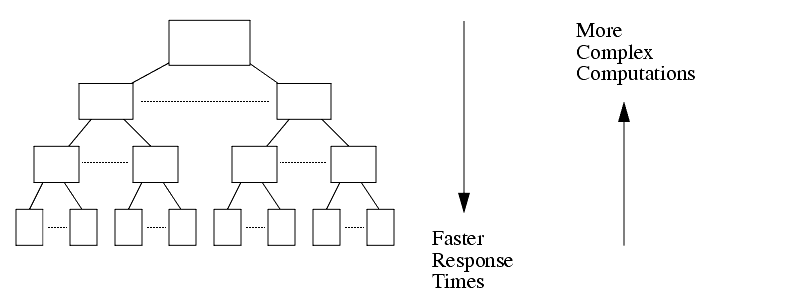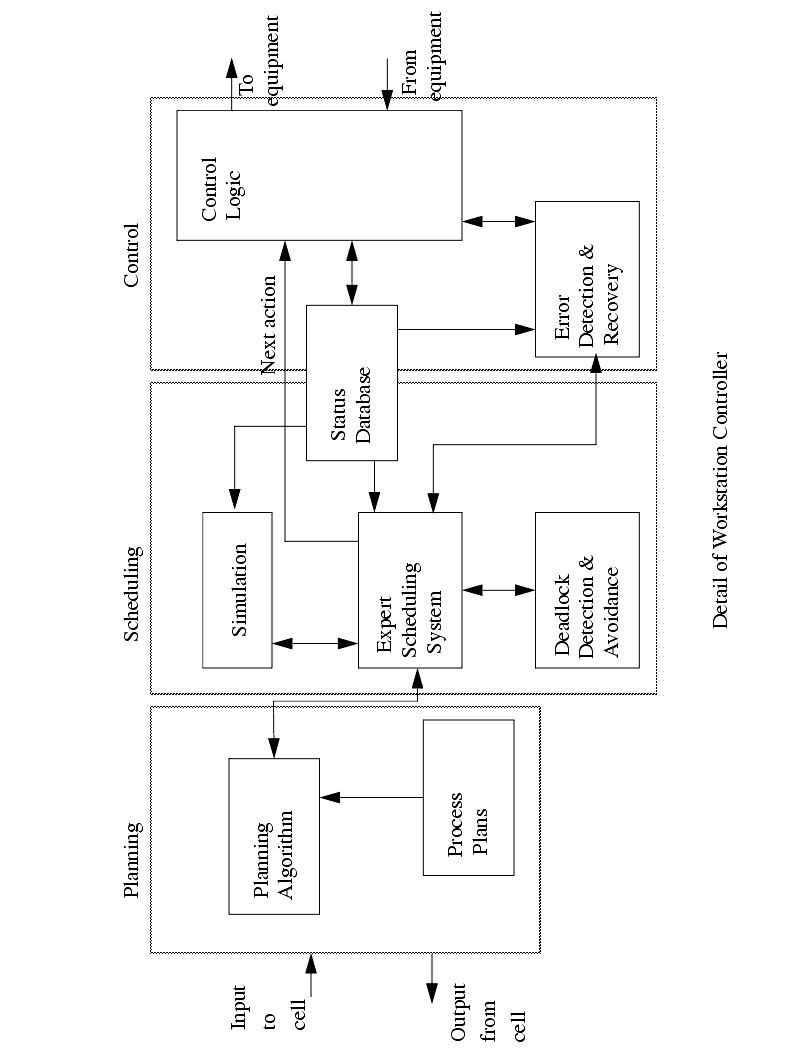
|
|
|
1.2 THE BIG PICTURE
������������How Computers Can Be Used in an Automated Manufacturing System

CAE - Analysis of the design done in the CAD system for stresses, flows, etc. (often described as part of CAD)
CAM - Computer Aided/Automated Manufacturing - is the use of computers to select, setup, schedule, and drive manufacturing processes.
CAPP - Computer Aided Process Planning - is used for converting a design to a set of processes for production, machine selection, tool selection, etc.
PPC - Production Planning and Control - also known as scheduling. Up to this stage each process is dealt with separately. Here they are mixed with other products, as required by customer demand, and subject to limited availability of manufacturing resources.
Factory Control - On a minute by minute basis this will split up schedules into their required parts, and deal with mixed processes on a factory wide basis. (This is very factory specific, and is often software written for particular facilities) An example system would track car color and options on an assembly line.
Workcell Control - At this system level computers deal with coordination of a number of machines. The most common example is a PLC that runs material handling systems, as well as interlocks with NC machines.
Machine Control - Low level process control that deals with turning motors on/off, regulating speeds, etc., to perform a single process. This is often done by the manufacturers of industrial machinery.
1.2.1 CAD/CAM?
������������A common part of an integrated system
In CAD we design product geometries, do analysis (also called CAE), and produce final documentation.
In CAM, parts are planned for manufacturing (eg. generating NC code), and then manufactured with the aid of computers.
CAD/CAM tends to provide solutions to existing problems. For example, analysis of a part under stress is much easier to do with FEM, than by equations, or by building prototypes.
CAD/CAM systems are easy to mix with humans.
This technology is proven, and has been a success for many companies.
There is no `ONE WAY' of describing CAD/CAM. It is a collection of technologies which can be run independently, or connected. If connected they are commonly referred to as CIM
1.2.2 The Architecture of Integration
������������integrated manufacturing systems are built with generic components such as,
Typical applications found in an integrated environment include,
The automated machines used include,
On the shop floor computers provide essential support in a workcell for,
- DNC - Direct Numerical Control of all the machine tools in the FMS. Both CNC and DNC functions can be incorporated into a single FMS.
- Monitoring - collection of production related data such as piece counts, tool changes, and machine utilization
- Supervisory control - functions related to production control, traffic control, tool control, and so on.
1.2.3 General Concepts
������������Manufacturing requires computers for two functions,
- Control - These programs must analyze sensory information, and control devices while observing time constraints.
An integrated system is made up of Interfaced and Networked Computers. The general structure is hierarchical,

The plant computers tend to drive the orders in the factory.
The plant floor computers focus on departmental control. In particular,
Process control computers are local to machines to control the specifics of the individual processes. Some of their attributes are,
The diagram shows how the characteristics of the computers must change as different functions are handled.

To perform information processing and control functions, each computer requires connections,
- Interfaced - Uses a single connection between two computers. This is characterized by serial interfaces such as RS-232 and RS-422.
- Networked - A single connection allows connections to more than one other computer. May also have shared files and databases.
- RS-232 (and other RS standards) are usually run at speeds of 2400 to 9600 baud, but they are very dependable.
- IEEE-488 connects a small number of computers (up to 32) at speeds from .5 Mbits/sec to 8 Mbits/sec. The devices must all be with a few meters of one another.
- Ethernet - connects a large number of computers (up to 1024) at speeds of up to 10 Mbits/sec., covering distances of km. These networks are LAN's, but bridges may be used to connect them to other LAN's to make a WAN.
- Mainframes - Used for a high throughput of data (from disks and programs). These are ideal for large business applications with multiple users, running many programs at once.
- Workstations (replacing Mini Computers) - have multiprocessing abilities of Mainframe, but are not suited to a limited number of users.
- Micro-processors, small computers with simple operating systems (like PC's with msdos) well suited to control. Most computerized machines use a micro-processor architecture.

A Graphical Depiction of a Workstation Controller
Search for More: |

Custom Search
|

|